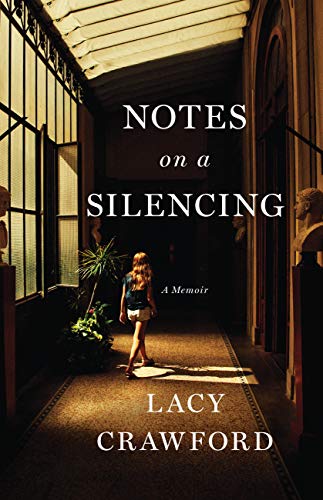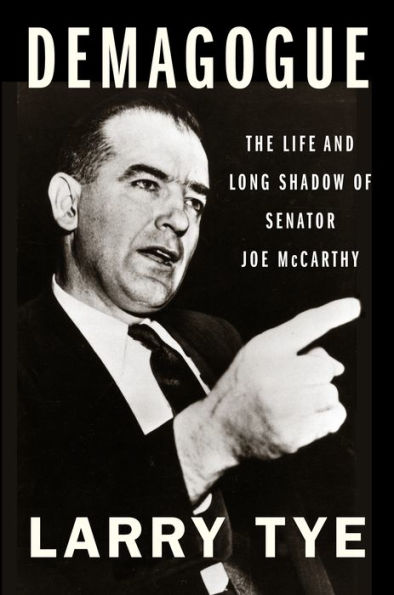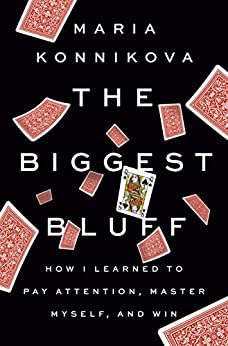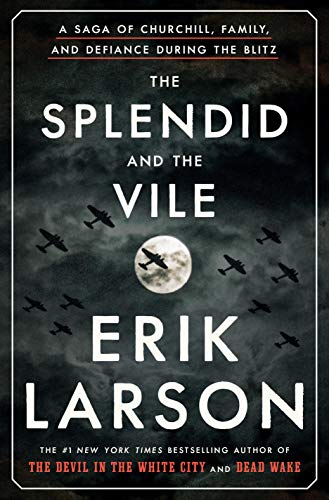Featured New Releases

NOTES ON A SILENCING
by Lacy Crawford
When the elite St. Paul’s School came under state investigation after extensive reports of sexual abuse on campus, Lacy Crawford thought she’d put behind her the assault she’d suffered decades before, when she was fifteen. Still, when detectives asked for victims to come forward, she sent a note.
With her criminal case file reopened, she saw for the first time evidence that corroborated her memories. Here were depictions of the naïve, hardworking girl she’d been, a chorister and debater, the daughter of a priest; of the two senior athletes who assaulted her and were allowed to graduate with awards; and of the faculty, doctors, and priests who had known about Crawford’s assault and gone to great lengths to bury it.
Now a wife, mother, and writer living on the other side of the country, Crawford learned that police had uncovered astonishing proof of an institutional silencing years before, and that unnamed powers were still trying to block her case. The slander, innuendo, and lack of adult concern that Crawford had experienced as a student hadn’t been the imagined effects of trauma, after all: these were the actions of a school that prized its reputation above anything, even a child.
This revelation launched Crawford on an extraordinary inquiry into the ways gender, privilege, and power shaped her experience as a girl at the gates of America’s elite. Her investigation looks beyond the sprawling playing fields and soaring chapel towers of crucibles of power like St. Paul’s, whose reckoning is still to come. And it runs deep into the channels of shame and guilt, witness and silencing, that dictate who can speak and who is heard in American society.
An insightful, mature, beautifully written memoir, Notes on a Silencing is an arresting coming-of-age story that wrestles with an essential question for our time: what telling of a survivor’s story will finally force a remedy?

THE RULES OF CONTAGION
by Adam Kucharski
From ideas and infections to financial crises and fake news, an “utterly timely” look at why the science of outbreaks is the science of modern life
These days, whenever anything spreads, whether it’s a YouTube fad or a political rumor, we say it went viral. But how does virality actually work? In The Rules of Contagion, epidemiologist Adam Kucharski explores topics including gun violence, online manipulation, and, of course, outbreaks of disease to show how much we get wrong about contagion, and how astonishing the real science is.
Why did the president retweet a Mussolini quote as his own? Why do financial bubbles take off so quickly? Why are disinformation campaigns so effective? And what makes the emergence of new illnesses — such as MERS, SARS, or the coronavirus disease COVID-19 — so challenging? By uncovering the crucial factors driving outbreaks, we can see how things really spread — and what we can do about it.
Whether you are an author seeking an audience, a defender of truth, or simply someone interested in human social behavior, The Rules of Contagion is an essential guide to modern life.

FOR THE LOVE OF EUROPE
by Rick Steves
After 40+ years of writing about Europe, Rick Steves has gathered 100 of his favorite memories together into one inspiring collection: For the Love of Europe: My Favorite Places, People, and Stories.
Join Rick as he’s swept away by a fado singer in Lisbon, learns the dangers of falling in love with a gondolier in Venice, and savors a cheese course in the Loire Valley. Contemplate the mysteries of centuries-old stone circles in England, dangle from a cliff in the Swiss Alps, and hear a French farmer’s defense of foie gras.
With a brand-new, original introduction from Rick reflecting on his decades of travel, For the Love of Europe features 100 of the best stories published throughout his career. Covering his adventures through England, France, Germany, Ireland, Italy, the Netherlands, Spain, and more, these are stories only Rick Steves could tell.
Wry, personal, and full of Rick’s signature humor, For the Love of Europe is a fond and inspirational look at a lifetime of travel.

DEMAGOGUE
by Larry Tye
The definitive biography of the most dangerous demagogue in American history, based on first-ever review of his personal and professional papers, medical and military records, and recently unsealed transcripts of his closed-door Congressional hearings
In the long history of American demagogues, from Huey Long to Donald Trump, never has one man caused so much damage in such a short time as Senator Joseph McCarthy. We still use “McCarthyism” to stand for outrageous charges of guilt by association, a weapon of polarizing slander. From 1950 to 1954, McCarthy destroyed many careers and even entire lives, whipping the nation into a frenzy of paranoia, accusation, loyalty oaths, and terror. When the public finally turned on him, he came crashing down, dying of alcoholism in 1957. Only now, through bestselling author Larry Tye’s exclusive look at the senator’s records, can the full story be told.
Demagogue is a masterful portrait of a human being capable of immense evil, yet beguiling charm. McCarthy was a tireless worker and a genuine war hero. His ambitions knew few limits. Neither did his socializing, his drinking, nor his gambling. When he finally made it to the Senate, he flailed around in search of an agenda and angered many with his sharp elbows and lack of integrity. Finally, after three years, he hit upon anti-communism. By recklessly charging treason against everyone from George Marshall to much of the State Department, he became the most influential and controversial man in America. His chaotic, meteoric rise is a gripping and terrifying object lesson for us all. Yet his equally sudden fall from fame offers reason for hope that, given the rope, most American demagogues eventually hang themselves.

HITLER'S TRUE BELIEVERS
by Robert Gellately
Understanding Adolf Hitler’s ideology provides insights into the mental world of an extremist politics that, over the course of the Third Reich, developed explosive energies culminating in the Second World War and the Holocaust. Too often the theories underlying National Socialism or Nazism are dismissed as an irrational hodge-podge of ideas. Yet that ideology drove Hitler’s quest for power in 1933, colored everything in the Third Reich, and transformed him, however briefly, into the most powerful leader in the world.
How did he discover that ideology? How was it that cohorts of leaders, followers, and ordinary citizens adopted aspects of National Socialism without experiencing the “leader” first-hand or reading his works? They shared a collective desire to create a harmonious, racially select, “community of the people” to build on Germany’s socialist-oriented political culture and to seek national renewal. If we wish to understand the rise of the Nazi Party and the new dictatorship’s remarkable staying power, we have to take the nationalist and socialist aspects of this ideology seriously.
Hitler became a kind of representative figure for ideas, emotions, and aims that he shared with thousands, and eventually millions, of true believers who were of like mind . They projected onto him the properties of the “necessary leader,” a commanding figure at the head of a uniformed corps that would rally the masses and storm the barricades. It remains remarkable that millions of people in a well-educated and cultured nation eventually came to accept or accommodate themselves to the tenants of an extremist ideology laced with hatred and laden with such obvious murderous implications.
Still Hot in Non-Fiction & Biography

THE BIGGEST BLUFF
by Maria Konnikova
How a New York Times bestselling author and New Yorker contributor parlayed a strong grasp of the science of human decision-making and a woeful ignorance of cards into a life-changing run as a professional poker player, under the wing of a legend of the game
It’s true that Maria Konnikova had never actually played poker before and didn’t even know the rules when she approached Erik Seidel, Poker Hall of Fame inductee and winner of tens of millions of dollars in earnings, and convinced him to be her mentor. But she knew her man: a famously thoughtful and broad-minded player, he was intrigued by her pitch that she wasn’t interested in making money so much as learning about life. She had faced a stretch of personal bad luck, and her reflections on the role of chance had led her to a giant of game theory, who pointed her to poker as the ultimate master class in learning to distinguish between what can be controlled and what can’t. And she certainly brought something to the table, including a Ph.D. in psychology and an acclaimed and growing body of work on human behavior and how to hack it. So Seidel was in, and soon she was down the rabbit hole with him, into the wild, fiercely competitive, overwhelmingly masculine world of high-stakes Texas Hold’em, their initial end point the following year’s World Series of Poker.
But then something extraordinary happened. Under Seidel’s guidance, Konnikova did have many epiphanies about life that derived from her new pursuit, including how to better read, not just her opponents but far more importantly herself; how to identify what tilted her into an emotional state that got in the way of good decisions; and how to get to a place where she could accept luck for what it was, and what it wasn’t. But she also began to win. And win. In a little over a year, she began making earnest money from tournaments, ultimately totaling hundreds of thousands of dollars. She won a major title, got a sponsor, and got used to being on television, and to headlines like “How one writer’s book deal turned her into a professional poker player.” She even learned to like Las Vegas.
But in the end, Maria Konnikova is a writer and student of human behavior, and ultimately the point was to render her incredible journey into a container for its invaluable lessons. The biggest bluff of all, she learned, is that skill is enough. Bad cards will come our way, but keeping our focus on how we play them and not on the outcome will keep us moving through many a dark patch, until the luck once again breaks our way.

THE SPLENDID AND THE VILE
by Erik Larson
On Winston Churchill’s first day as prime minister, Adolf Hitler invaded Holland and Belgium. Poland and Czechoslovakia had already fallen, and the Dunkirk evacuation was just two weeks away. For the next twelve months, Hitler would wage a relentless bombing campaign, killing 45,000 Britons. It was up to Churchill to hold his country together and persuade President Franklin Roosevelt that Britain was a worthy ally—and willing to fight to the end.
In The Splendid and the Vile, Erik Larson shows, in cinematic detail, how Churchill taught the British people “the art of being fearless.” It is a story of political brinkmanship, but it’s also an intimate domestic drama, set against the backdrop of Churchill’s prime-ministerial country home, Chequers; his wartime retreat, Ditchley, where he and his entourage go when the moon is brightest and the bombing threat is highest; and of course 10 Downing Street in London. Drawing on diaries, original archival documents, and once-secret intelligence reports—some released only recently—Larson provides a new lens on London’s darkest year through the day-to-day experience of Churchill and his family: his wife, Clementine; their youngest daughter, Mary, who chafes against her parents’ wartime protectiveness; their son, Randolph, and his beautiful, unhappy wife, Pamela; Pamela’s illicit lover, a dashing American emissary; and the advisers in Churchill’s “Secret Circle,” to whom he turns in the hardest moments.
The Splendid and the Vile takes readers out of today’s political dysfunction and back to a time of true leadership, when, in the face of unrelenting horror, Churchill’s eloquence, courage, and perseverance bound a country, and a family, together.
